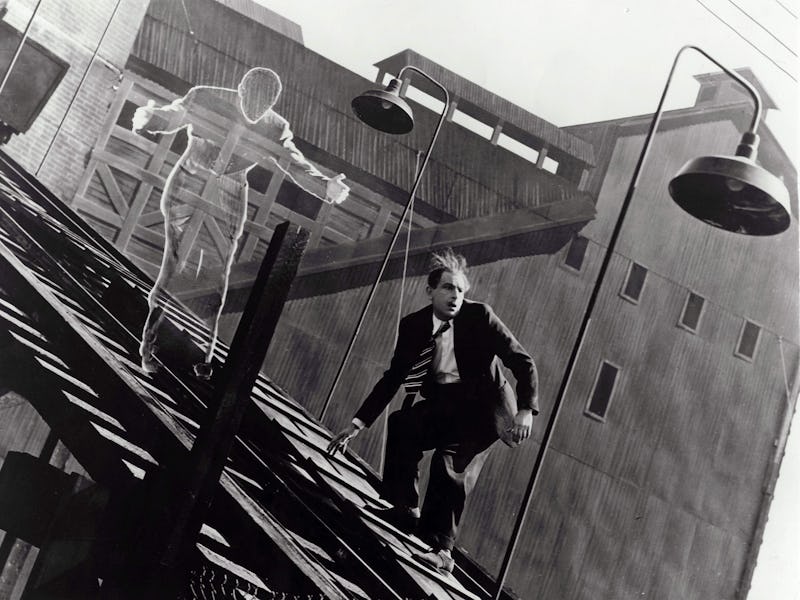When 20th Century Horror's Ultimate Icon Turned Invisible
Vincent Price kicked off his reign as the king of 20th century horror with The Invisible Man Returns — not that you’d know it.

Celebrating its 85th anniversary this month, The Invisible Man Returns was the first time Vincent Price took center stage in the genre he’d go on to dominate. Not that you’d know it. As its title suggests, the horror icon spends all but one minute of the entire picture under a cloak of invisibility. And shot 14 years before a nose injury on the set of The Mad Magician changed his voice forever, even his mellifluous tones are unrecognizable.
Still, Price undoubtedly fulfilled the casting brief (unknown, good-looking, youthful) Universal Studios — then in the middle of their golden horror phase — pitched in The Hollywood Reporter. The actor had just three credits to his name, comedy Service de Luxe, romantic drama The Private Lives of Elizabeth and Essex, and historical scarefest Tower of London, with the latter starring fellow scream king Boris Karloff. His surprisingly fresh-faced (and sans his signature mustache) appearance in the closing big reveal, meanwhile, showed he hadn’t yet reached his thirties.
Although it made back nearly four times its budget, the sequel to 1933’s The Invisible Man didn’t exactly propel Price to the A-list. He spent the rest of the decade as a character actor, and largely in the field of film noir, too. In fact, he wouldn’t grace another horror until 1953 when he played a murderous sculptor in House of Wax. Nevertheless, there are undoubtedly still signs of his future greatness.
Price plays Geoffrey Radcliffe, a man wrongly convicted and sentenced to execution for the murder of his sibling Michael. Luckily, he just happens to be best friends with Dr. Frank Griffin (John Sutton), the scientist brother of the original’s far more malevolent invisible man. After losing a final appeal, the pair and Geoffrey’s fiancee Helen (Nan Grey) concoct a getaway plan authorities should perhaps have seen coming: use the invisibility pill known as duocaine to escape from prison and track down the real culprit.
Austrian director Joe May, despite barely speaking a word of English, gets plenty of comic mileage out of this ridiculous premise. See the chaotic set-piece in which an army of gas-masked policemen are made to look like the Keystone Cops by a force they can’t comprehend, or the moment Geoffrey politely asks a scarecrow if he can borrow his clothes.
While obviously dated through today’s lens, the Oscar-nominated special effects are impressive for the time, particularly whenever an inanimate object floats through the air. Geoffrey’s life-saving transition from invisible man to skeleton, and finally fully-fleshed human, also ensures the film concludes with a visual bang too.
Geoffrey’s masked megalomania begins to take hold.
However, it’s Price’s vocal performance that really sells the far-fetched concept, whether it’s displaying the sardonic wit which would become his forte (“I can always get a job haunting a house”) or brilliantly embodying the delusions of grandeur that consumed the original’s anti-hero. “I’ve never been more free in my life,” he booms out at a dinner table scene in which Frank and Helen begin to recognize they may have helped create another monster. “No one can stop you. No one can touch you. You don't need any infantile little [police] to carry out your will. You're much greater than any of them.”
Indeed, having witnessed the side effects that heightened his brother’s villainous tendencies, Frank spends most of the film trying to discover a counteracting antidote. Yet Geoffrey’s gradual descent into Elon Musk-esque megalomania is so entertaining it’s a relief his efforts — including a literal guinea pig experiment which would get PETA in a tizz — prove to be in vain.
Despite stealing the show, though, Price still had to surrender top billing to Sir Cedric Hardwicke, by far the most high-profile name in the cast. The Shakespearean actor undoubtedly lends a sense of gravitas to proceedings as Geoffrey’s cousin and new manager of the Radcliffe family’s coalmine, Richard Cobb. But without any other likely suspects and a clear motive, it’s little surprise when he’s revealed as the true murderer.
The youthful, good-looking, and then-unknown Vincent Price in more familiar form.
What is interesting, however, is that the film decides to disclose this information, via Geoffrey’s ghostly taunting of toadying employee Willie Spears (Alan Napier), halfway through, leaving its remaining 40 minutes as less of a whodunit and more of a revenge thriller. Cobb eventually gets his comeuppance at the hands of a precariously placed coal wagon, a rather poetic turn of events which proves Curt Siodmak and Lester K. Cole put more thought into their screenplay than they did for the hastily-assembled The Invisible Woman later that same year.
Despite surviving the impending execution and a serum which definitely hadn’t met FDA approval, Geoffrey didn’t show up in any other of the Invisible films that spawned a mini-Universal universe in the 1940s (he did, however, cameo in the more comedic Abbott and Costello Meet Frankenstein). Price, on the other hand, would go on to become one of 20th century horror’s most familiar faces. Unlike in this impressive calling card, though, it thankfully wasn’t one continously covered in velvet.